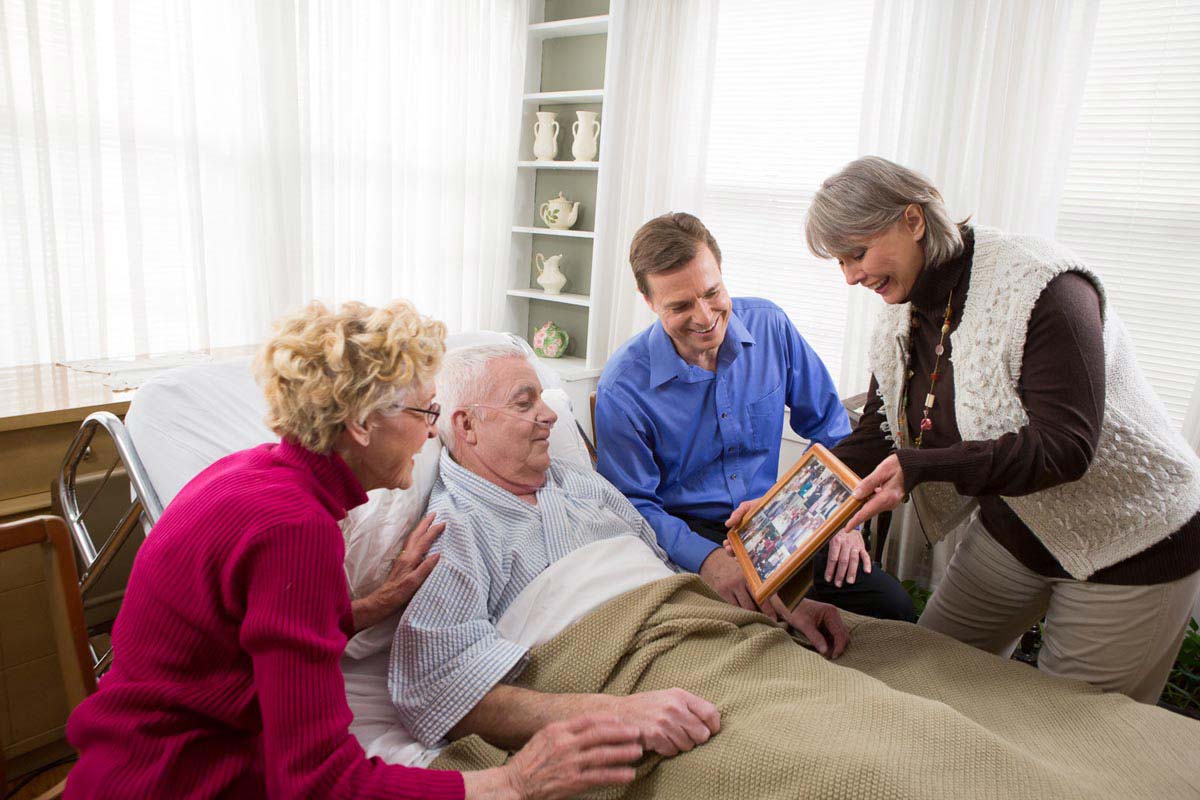30 seconds summary
- Balancing caregiving and self-care is crucial for family members supporting aging loved ones. Key tips include setting boundaries, asking for help from other family members or professionals, practicing self-compassion, scheduling personal time for rest and activities, and utilizing community resources.
- Prioritize emotional and physical well-being to prevent burnout, and communicate openly with the loved one to maintain a healthy relationship.
- Regular breaks and support networks can also help caregivers stay healthy while providing the necessary care.
As the population ages, more family members are becoming primary caregivers for their aging loved ones. This responsibility is both deeply fulfilling and challenging. The role of a caregiver can bring people closer to their family members, providing opportunities to give back for years of care and support. However, caregiving can also be physically and emotionally draining. When family members take on the responsibility of supporting elderly relatives, they often find it difficult to balance their own well-being with the care needs of their loved ones. This delicate balance of caregiving and self-care is crucial to ensure the well-being of both the caregiver and the person they are caring for.
Caring for elderly loved ones involves numerous responsibilities such as managing medications, assisting with daily activities, offering emotional support, and sometimes even helping with financial or legal matters. However, one of the most significant yet often overlooked aspects of caregiving is the emotional toll it takes on the caregiver. Feelings of stress, isolation, burnout, and even resentment can arise when caregivers neglect their own needs in favor of prioritizing the care of others. In this article, we will explore tips for balancing caregiving with self-care, including seeking outside support, maintaining mental health, and fostering companionship for seniors.
Understanding the Role of a Caregiver
Before diving into strategies for balancing caregiving and self-care, it is essential to understand what being a caregiver entails. Caregivers may be responsible for a wide range of duties, including:
- Physical Assistance: This includes helping the elderly with daily tasks such as bathing, dressing, eating, and moving around. For individuals with chronic illnesses or disabilities, this may involve more intensive physical care.
- Medication Management: Many elderly people are prescribed multiple medications, and caregivers play a crucial role in ensuring that they take their medicine on time and in the correct dosage.
- Emotional Support: The emotional needs of seniors can be just as significant as their physical needs. Caregivers often serve as a source of emotional comfort, providing companionship, reducing feelings of loneliness, and helping their loved ones feel valued and heard.
- Managing Household Tasks: Caregivers often help with light housekeeping, meal preparation, shopping, and even transportation to appointments or social outings.
The role of a caregiver can vary greatly depending on the needs of the person they are caring for. Some caregivers provide light assistance, while others may be responsible for full-time care, especially if their loved one has dementia, Alzheimer’s disease, or another chronic condition.
The Importance of Self-Care for Caregivers
Caring for others can easily take over the lives of those who are responsible for a loved one’s well-being. The demands of caregiving can become overwhelming, especially when caregivers neglect their own needs. As a result, caregiver burnout is a real concern. Burnout can manifest in various ways, including physical exhaustion, emotional stress, anxiety, depression, and a general sense of being overwhelmed.
To avoid burnout, caregivers must prioritize their own well-being. This is not a selfish act, but rather an essential part of being an effective caregiver. A caregiver who is physically and mentally healthy is better equipped to provide the best care for their loved one. When caregivers take time for self-care, they are able to recharge, gain perspective, and approach caregiving with renewed patience, energy, and compassion.
Tips for Caregivers to Maintain a Healthy Balance
While caregiving can often feel all-consuming, there are several strategies that can help caregivers manage their responsibilities while also prioritizing self-care. Below are some practical tips to help caregivers maintain a healthier balance:
1. Seek Outside Help and Support
Caregiving is often a team effort, even if the caregiver is the primary person providing care. It’s important for caregivers to recognize when they need help and to ask for it. This may mean seeking assistance from other family members, hiring professional caregivers, or finding respite care services. Respite care allows caregivers to take short breaks while ensuring their loved one continues to receive proper care.
In addition to practical help, emotional support is equally important. Many caregivers find it beneficial to connect with others who are in similar situations. Support groups for caregivers provide a space to share experiences, offer advice, and find comfort in knowing that others understand what they’re going through. Support groups can be found in person or online, and they provide caregivers with the opportunity to feel heard and supported.
2. Prioritize Time for Yourself
It’s easy for caregivers to feel guilty when they take time away from their loved one, but self-care is essential to maintaining one’s own health and well-being. Setting aside time for yourself is not selfish—it’s necessary. Whether it’s taking a walk, practicing yoga, enjoying a hobby, or simply taking a nap, make sure to prioritize your own needs regularly. Even small moments of self-care can have a significant impact on reducing stress and improving your overall mental health.
Creating a caregiving schedule can help manage time better. By clearly defining times for caregiving and times for self-care, caregivers can more easily make space for themselves without feeling guilty. This scheduling can also help ensure that both the caregiver and the loved one get the time and attention they need.
3. Get Help with Respite Care
Respite care is designed to give family caregivers a break from their caregiving duties. It can take various forms, including in-home respite care, where a professional caregiver comes to assist your loved one for a short time, or facility-based respite care, where the elderly person stays in a care facility for a brief period. By utilizing respite care services, caregivers can take time off to rest and recharge, which ultimately helps them provide better care when they return to their responsibilities.
4. Stay Physically Active
Physical activity is crucial for caregivers to manage stress, prevent physical health issues, and maintain energy levels. Simple activities like walking, swimming, or yoga can help improve mood, increase physical stamina, and boost overall well-being. Caregivers should look for opportunities to incorporate physical activity into their daily routines, even if it’s just a few minutes each day.
Staying active can also serve as a bonding activity with the person being cared for. If possible, caregivers can take their loved one for a walk, go to the park, or engage in light exercises together. These activities help improve the physical and emotional health of both the caregiver and the person being cared for.
5. Foster Companionship for Seniors
One of the most important aspects of caregiving is ensuring that the elderly person receives companionship. Isolation can have a negative impact on an older person’s health and emotional well-being. For caregivers, fostering companionship for seniors means spending quality time with their loved ones, engaging in meaningful conversations, and finding ways to connect beyond the caregiving duties.
In addition to personal companionship, caregivers can also explore other social options for their loved ones, such as joining a senior center, participating in group activities, or encouraging social visits with friends or other family members. Social connections help combat loneliness and offer seniors a sense of purpose and belonging, which ultimately enhances their overall quality of life.
6. Maintain a Healthy Diet and Sleep Schedule
Caregivers need to nourish their bodies in the same way they care for their loved ones. Eating a balanced diet, drinking enough water, and getting enough sleep are crucial to maintaining energy levels and emotional stability. Unfortunately, caregivers often sacrifice their own health in the pursuit of caring for others. Ensuring that you eat healthy meals and get enough rest will improve your mood and increase your capacity to provide the care your loved one needs.
Creating a consistent sleep schedule can also help caregivers maintain a clear and focused mind. Sleep deprivation can make it harder to handle stress, be patient, and make decisions. If possible, caregivers should try to rest at night and take short naps when they are able to during the day.
7. Practice Stress Management Techniques
Caregiving can be stressful, but there are numerous ways to manage stress effectively. Mindfulness practices, such as deep breathing exercises, meditation, and journaling, can help caregivers relax and clear their minds. Taking breaks to breathe deeply, practicing gratitude, or engaging in creative activities like drawing or painting can help caregivers feel more grounded and present.
Stress management should be an ongoing practice, not something that’s only used when feelings of stress become overwhelming. Incorporating small moments of relaxation throughout the day can help caregivers stay calm and focused, even during difficult moments.
Conclusion
Caring for aging loved ones is both a deeply rewarding and challenging responsibility. While caregivers often find fulfillment in providing support, it is essential to maintain a healthy balance between caregiving and self-care. By seeking outside help, fostering companionship for seniors, prioritizing personal time, staying active, and practicing stress management, caregivers can maintain their own well-being while offering quality care to their loved ones.
Ultimately, caregiving is a shared journey. By embracing self-care, caregivers can ensure that they are in the best possible shape—both physically and emotionally—to provide compassionate and effective support to their aging family members.

